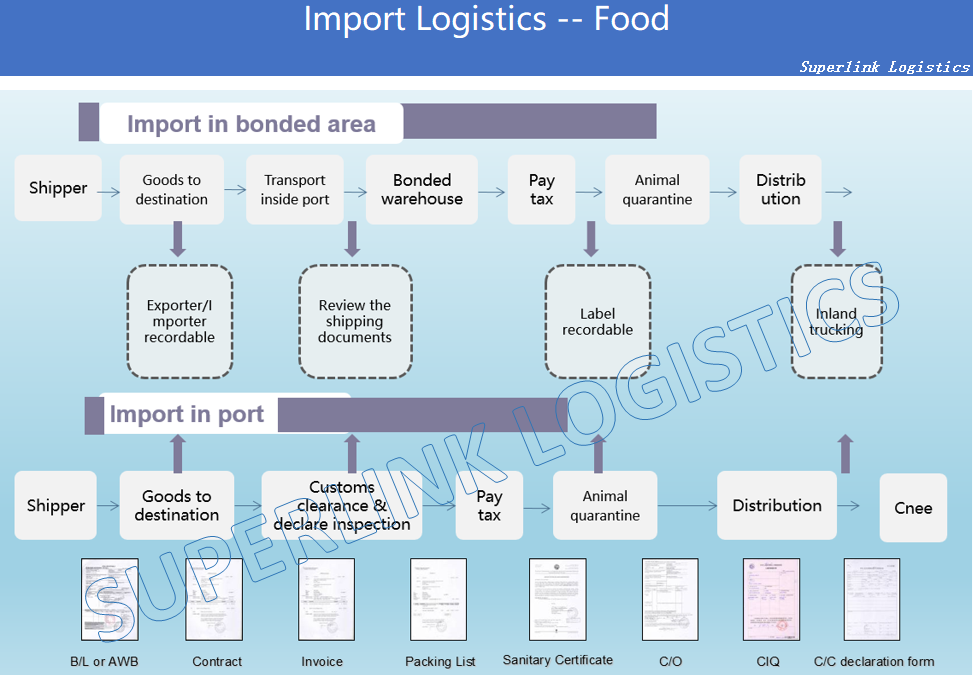
Asia pacific region has the highest volume of food consumption in the world, largely due to its population base. China is the largest country in the region, thanks to its ever growing economic presence from last decades, emerging middle class in China are now in the search of more quality food selection from abroad.
In the old days, imported food were dominated by international brands and big name distributors, due to several reasons.
Strict and tight policy on imported food regulated by CIQ (CHINA ENTRY-EXIT INSPECTION AND QUARANTINE BUREAU) and other regulatory bodies, only the sizable companies had the willingness to deploy sufficient resource to cope with all the requirements from A-Z
Limited sales channel, going to hyper markets like Walmart remained the only choices to customers
Limited selection and higher price due to above mentioned 1 and 2
Quietly, the situation has been changing in recent years following the "explosion" of Cross-boarder ecommerce and relaxing policy on import.
Thanks to the top online marketplace in the likes of Tmall, more and more foreign foodstuff flooded into China market and with the increasing penetration of online shopping and the convenience in payment and delivery, consumer all over China now gain the access to the very same merchandise in spite of territorial difference.
Market is opened and customers are ready to try anything new.
On an unprecedented scale, China will host the first international import expo (CIIE) in Shanghai from Nov 5 to Nov. 10 this year. More than 150,000 foreign and domestic buyers are expected to join this event, so anyone interested in stepping into the food sector from there, it is now time to do the homework.
Traditionally, working with sizeable local distributors will ensure a smooth 1st step into the market; however, for anyone wants to take a step further by establishing their owned sales network to have a bigger say on sales channel, sales territory and beyond, here are quite a few keynotes to be taken with regards to “ Import food to China”.
Before everything starts, it is import to look up commodity Harmonized System code (HS code) on General Administration of Customs to confirm whether this commodity could be imported, does it require import license for customs clearance purpose.
Most products entering China don’t need an import license if they are registered with Ministry of Commerce P.R.C (MOFCOM), meaning someone in the same country of origin had exported the same products to China before.
An import permit may be needed from General Administration of Quality Supervision, Inspection and Quarantine of P.R.C (AQSIQ) or other specialist departments to import food products such as meat, dairy, fish and other aquatic products.
Registration for imports is the responsibility of importer/buyer in China while requiring supporting documents from the sellers for the purpose of verification, and MOFCOM or other agencies may ask for the samples for selective examination.
Always double check with importer and consult a local freight forwarder who is familiar with operation details (policy/regulation, paperwork, entry gate-way etc) to confirm logistics
arrangement before shipping cargoes from origin
When everything is set and it is good to go, there are a couple of documentations to be prepared for clearance;
Sales contract: clearly stated the importer for the shipment
Commercial Invoice: with currency and unit value
Packing list: quantity and packaging details
Bill of Lading or Air-Way Bill
Sanitary certificate
Certificate of Origin
CIQ
C/C declaration form
There are two possibility to facilitate customs process after container discharge from the ship and before cargoes being able to freely circulated in China market;
Import in bonded area
Import in Port

Either way works perfectly to the purpose of customs clearance while there is clear advantage to import in bonded area because;
Clock is ticking for detention charge as soon as the container is discharged from ship, however, Importer could not claim the container from shipping line until it is cleared from customs, which normally takes up to two weeks or even longer. (see below for customs process)

Goods in bonded area are considered as foreign goods, temporarily exempted from duty and tax until formal entry into China. So, Importer is able to claim the container from shipping line, unload all the goods and start customs process. No worries for any carrier charges for holding the container.
Meanwhile, according to China’s National Standard for the Labelling of Foods, all food products sold must bear a proper label that includes the following mandatory details:
name and trademark of the product
ingredients
net weight and solid content
name, address and telephone number of the manufacturer
production date (year/month/date) and storage instructions
packer / distributor (name and address)
batch number
country of origin
quality guarantee and/or storage period (year/month/date)
usage instructions
Keeping import goods in bonded area will improve the efficiency in communication with customs officials for labelling to avoid any delay in clearance process.
Going further, import to bonded area will be giving cargo owner operational feasibilities in deciding sales market (North or South China) and sales channel ( hypermarket retailer or On-line Marketplace), which is of crucial importance in both sales and cost management due to geographical difference in the country.
If you are having any questions regarding the process or about to import foodstuff to China, drop us a line and we are always here to help.
Comments